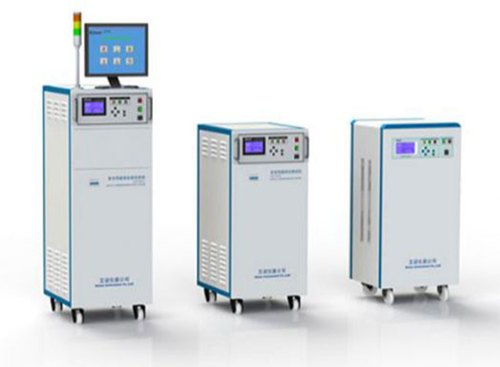In the quest for sustainable energy solutions, solar power stands out as a beacon of hope, offering clean, renewable energy derived from the sun’s abundant rays. Photovoltaic (PV) arrays, comprised of interconnected solar panels, have become a cornerstone of the renewable energy landscape, harnessing sunlight to generate electricity. However, optimizing the performance and reliability of PV systems requires advanced tools and technologies. Enter the PV Array Photovoltaic Simulator DC Power Supply, a versatile instrument that plays a pivotal role in the development, testing, and deployment of solar energy systems.
Understanding PV Array Photovoltaic Simulator DC Power Supply
At its core, a PV Array Photovoltaic Simulator DC Power Supply is a specialized device designed to emulate the electrical characteristics of a solar PV array. It provides a controlled source of DC power that mimics the output of actual solar panels under various operating conditions. By simulating sunlight and environmental factors, such as temperature and irradiance, the simulator enables engineers and researchers to assess the performance of PV systems in a laboratory setting.
The simulator typically consists of power electronic converters, programmable controls, and monitoring capabilities that allow users to replicate the behavior of PV arrays with high precision. It can generate DC voltages and currents corresponding to different solar irradiance levels, temperatures, and shading conditions, providing a versatile platform for testing and experimentation.
Applications of PV Array Photovoltaic Simulator DC Power Supply
The applications of PV Array Photovoltaic Simulator DC Power Supply are diverse and encompass the entire lifecycle of solar energy systems, from design and development to deployment and operation. One of the primary uses of these simulators is in the testing and validation of PV system components, including solar panels, inverters, charge controllers, and energy storage systems.
During the design phase, engineers can use the simulator to evaluate the performance of different PV panel configurations, assess the impact of shading and orientation on energy production, and optimize the sizing of system components. By simulating real-world operating conditions, such as partial shading and temperature variations, researchers can identify potential efficiency losses and design robust solutions to mitigate them.
Moreover, PV Array Photovoltaic Simulator DC Power Supply plays a crucial role in testing and certifying PV products for compliance with industry standards and grid integration requirements. Manufacturers use simulators to conduct performance tests, durability assessments, and reliability studies to ensure that their products meet the stringent quality and safety standards expected in the solar industry.
Beyond product development, PV Array Photovoltaic Simulator DC Power Supply supports research efforts aimed at advancing the efficiency, reliability, and cost-effectiveness of solar energy systems. Researchers can use simulators to investigate novel materials, improve control algorithms, and explore innovative system architectures to enhance the performance of PV arrays and maximize energy yield.
Advantages of PV Array Photovoltaic Simulator DC Power Supply
The adoption of PV Array Photovoltaic Simulator DC Power Supply offers several advantages over traditional testing methods and field trials. Firstly, simulators provide a controlled and repeatable environment for conducting experiments, eliminating the variability associated with outdoor testing. This enables researchers to isolate specific factors affecting PV system performance and evaluate their impact systematically.
Secondly, PV Array Photovoltaic Simulator DC Power Supply accelerates the testing process by allowing researchers to simulate years’ worth of solar irradiance and environmental conditions in a fraction of the time. This accelerated testing reduces the time-to-market for new PV technologies and facilitates rapid iteration and innovation in the solar industry.
Furthermore, simulators enable researchers to explore a wide range of operating scenarios and edge cases that may be challenging or impractical to replicate in the field. By simulating extreme weather conditions, grid disturbances, and component failures, engineers can assess the resilience and reliability of PV systems under adverse conditions and design robust solutions to enhance their performance.
Challenges and Future Directions
While PV Array Photovoltaic Simulator DC Power Supply offers significant benefits, it also presents challenges and opportunities for improvement. One of the key challenges is the accurate modeling of solar irradiance, temperature, and other environmental factors to create realistic simulation scenarios. Improving the fidelity of simulation models requires advancements in sensor technology, data analytics, and computational methods.
Another challenge is the scalability of simulators to accommodate large-scale PV arrays and interconnected systems. As solar installations continue to grow in size and complexity, there is a need for simulators capable of emulating multi-megawatt PV plants and microgrid configurations accurately.
Looking ahead, the future of PV Array Photovoltaic Simulator DC Power Supply lies in advancing simulation capabilities, enhancing model accuracy, and integrating with other testing and validation tools. With ongoing developments in power electronics, control systems, and renewable energy technologies, simulators will continue to play a vital role in driving innovation and accelerating the adoption of solar energy worldwide.
In conclusion, PV Array Photovoltaic Simulator DC Power Supply is a powerful tool for advancing the state-of-the-art in solar energy research and development. By providing a versatile platform for testing, experimentation, and validation, simulators empower engineers and researchers to unlock the full potential of solar power and pave the way for a sustainable energy future.


